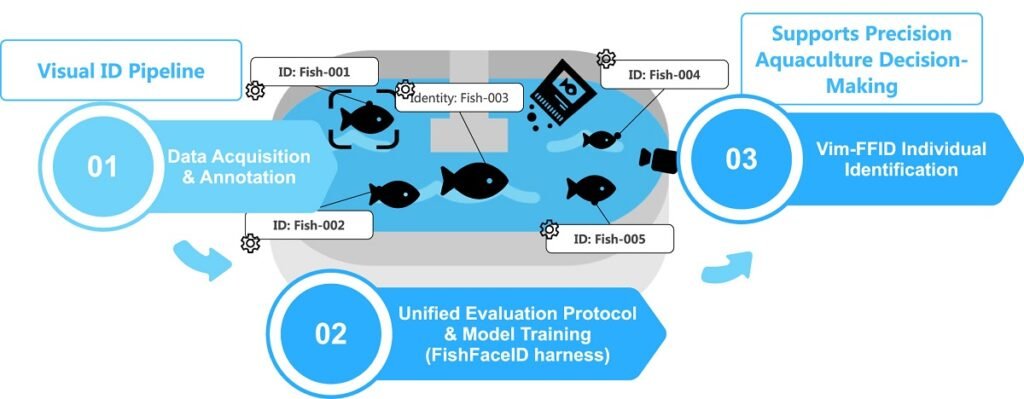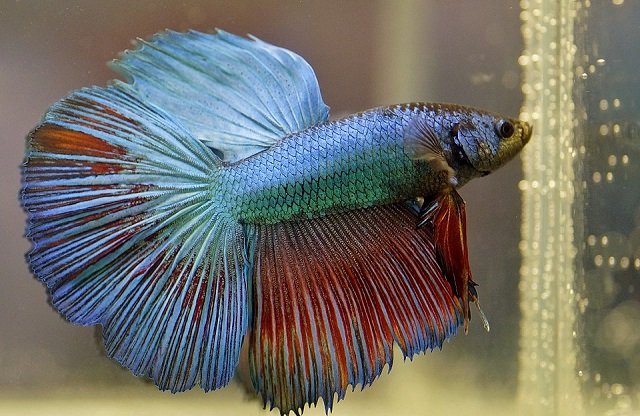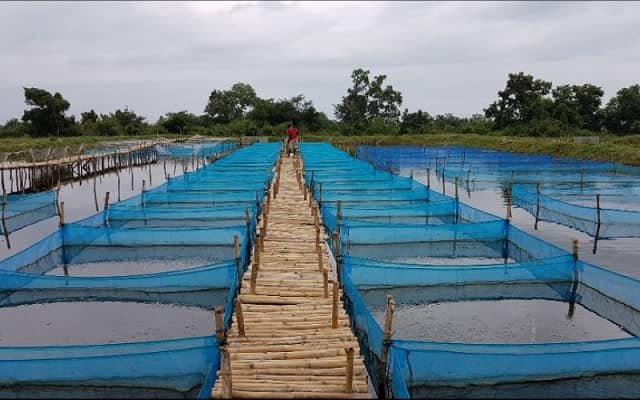
Precision Aquaculture (PA) is transforming the industry by integrating data and automation to enhance sustainability and animal welfare. However, one of the greatest challenges in achieving true precision has been the individual tracking of organisms. How can one determine which fish has eaten, which is ill, or which possesses the best growth rate within a tank holding thousands of individuals?
Traditional solutions, such as PIT tags, branding, or fin clipping, are invasive. These methods are not only costly and labor-intensive but can also induce stress, impair growth, and even increase the animals’ susceptibility to disease.
Although non-invasive methods like photo-identification have emerged, their large-scale application on commercial farms has been limited. Real-world conditions—such as turbid water, high population density, partial occlusion (overlapping fish), and fluctuating illumination—cause most systems to fail.
A recent study published in Aquaculture by researchers from the Ocean University of China and Qilu University of Technology presents an advanced solution to this problem: FishFaceID, a deep learning system specifically designed for non-invasive individual identification in the challenging environments of aquaculture.
Key findings
- Non-invasive Technology: Introduces FishFaceID, a novel deep learning-based system designed for non-invasive individual identification of aquatic organisms, aiming to replace stressful methods like physical tagging or marking.
- Novel AI Model: The system’s core is a new AI model named Vim-FFID, optimized for fine-grained underwater recognition.
- High Accuracy in Real-World Conditions: The Vim-FFID model proved robust and accurate, achieving up to 98.81% accuracy (Acc@1) in identifying sea cucumbers, performing effectively even in conditions of turbidity, partial occlusion, and varying viewing angles (aerial and underwater).
- Boost for Precision Aquaculture: This technology enables individualized monitoring, which is fundamental for key PA objectives, such as personalized feeding, selective breeding, disease prevention, and behavior monitoring.
- Multi-species Validation: The system was successfully tested on a new benchmark dataset that includes marine and freshwater species, vertebrates and invertebrates, such as the sea cucumber, leopard coral grouper, blue-spotted grouper, and grass carp.
“Facial Recognition” for fish and aquatic organisms
FishFaceID is not just a program but a complete framework that includes a new artificial intelligence (AI) model called Vim-FFID.
Unlike generic AI models, Vim-FFID was custom-designed for “fine-grained underwater recognition.” Its architecture allows it to learn subtle identification patterns, such as the spot topology on a grouper or the micro-textures on a sea cucumber.
The key to its success lies in its robustness. The model uses advanced techniques (such as “class-aware prompt tokens” and “entropy-guided prototype re-classification”) which, in simple terms, allow it to make precise decisions even when images are low-quality, partially obscured, or affected by water turbidity.
The challenge: Testing AI in real-world conditions
For an AI model to be useful, it must be tested with data that mimics the problems it will face on an actual farm. Since a suitable dataset did not exist, the researchers created a new one, designed specifically for precision aquaculture scenarios.
Stay Always Informed
Join our communities to instantly receive the most important news, reports, and analysis from the aquaculture industry.
The species under study
The team collected data from four very different species to ensure the system was versatile:
- Sea cucumber (Apostichopus japonicus)
- Leopard coral grouper (Plectropomus leopardus)
- Blue-spotted grouper (Epinephelus cyanopodus)
- Grass carp (Ctenopharyngodon idella)
This selection was strategic, as it covers organisms from marine and freshwater habitats, vertebrates and invertebrates, and species with distinct appearances (from smooth, low-contrast skins to complex patterns).
Data collection methodology
To capture realistic images, the team used a dual-camera setup (high-definition cameras and a GoPro 12) to record the animals simultaneously from two angles:
- Overhead: Looking down into the tank.
- Underwater: Looking from the side, beneath the water.
The recordings were made in both controlled laboratory tanks and real-farm environments, such as breeding cages and foam tanks. After processing thousands of frames, each individual was meticulously labeled by experts to train and test the AI.
Surprising identification accuracy
The performance of FishFaceID, particularly the Vim-FFID model, exceeded expectations and outperformed other benchmark deep learning models (like Swin, DeiT, and VMamba).
In the “Sea Cucumber-Overhead” subset, the Vim-FFID model achieved an accuracy of 98.81% (Acc@1). This means that in 98.81% of cases, the model’s first guess about the individual’s identity was correct.
Furthermore, the system proved far superior to classic recognition methods (such as ArcFace or FaceNet), which struggled to handle the high variability and noisy conditions of the aquatic environment.
Beyond accuracy: Model robustness
The study measured not only accuracy but also why the model was better. Data visualizations (using t-SNE) showed that Vim-FFID is capable of grouping the features of each individual much more compactly and separately than other models. In practice, this means the model has fewer “doubts” when differentiating between two individuals who look very similar.
The model also performed well in “few-shot” scenarios (learning with few samples), achieving accuracies above 93%. This is vital for farms, where it may not be practical to have thousands of images of every individual.
They even tested the use of synthetic images (created by another AI, a GAN) to augment the training dataset. This technique further improved the model’s accuracy, demonstrating its ability to continue learning.
The real impact: From identification to precision aquaculture
The results from FishFaceID are not just an academic achievement; they offer a scalable and precise solution to real-world problems in aquaculture. By enabling non-invasive individual identification, this technology unlocks the potential of precision aquaculture in several key areas:
- Personalized Feeding: Monitoring how much each individual eats to optimize rations, reduce feed waste, and improve conversion.
- Health Monitoring: Detecting subtle changes in behavior or appearance (like lesions) of a specific individual, allowing for early interventions before diseases spread.
- Selective Breeding: Automatically identifying and tracking individuals with the best growth rates or desirable traits, without needing to handle or physically tag them.
- Animal Welfare: Monitoring individual behavior to assess stress or environmental adaptation, all without interfering with the animals.
The FishFaceID system is designed to be modular. The authors suggest that producers can use lighter, faster models (like VMamba-Tiny) for real-time monitoring on the edge (on the farm itself), and the more powerful and accurate Vim-FFID model for deeper analysis in the cloud or on a central server.
Conclusion
FishFaceID represents a significant advancement toward smarter, more efficient, and ethical aquaculture. By solving the complex problem of individual identification in real underwater conditions non-invasively, this deep learning system provides producers with the tool they need to truly implement precision aquaculture.
Although the authors note that more work is needed to validate the system long-term (e.g., tracking fish growth over months) and with more species, FishFaceID establishes a solid foundation. It demonstrates that AI can monitor the health and well-being of aquatic animals, individual by individual, without causing them stress.
The FishFaceID database, evaluation protocol, and code are publicly available at: https://github.com/zhenglab/FishFaceID
Contact
Haiyong Zheng
College of Electronic Engineering, Ocean University of China
Qingdao, 266404, China.
Email: zhenghaiyong@ouc.edu.cn
Reference
Zhang, Q., Shi, Z., Sun, N., Wang, Y., Zhang, L., Wang, B., Xun, X., Zheng, B., & Zheng, H. (2026). FishFaceID: A deep learning-based non-invasive system for aquaculture organism individual identification. Aquaculture, 613, 743375. https://doi.org/10.1016/j.aquaculture.2025.743375
Editor at the digital magazine AquaHoy. He holds a degree in Aquaculture Biology from the National University of Santa (UNS) and a Master’s degree in Science and Innovation Management from the Polytechnic University of Valencia, with postgraduate diplomas in Business Innovation and Innovation Management. He possesses extensive experience in the aquaculture and fisheries sector, having led the Fisheries Innovation Unit of the National Program for Innovation in Fisheries and Aquaculture (PNIPA). He has served as a senior consultant in technology watch, an innovation project formulator and advisor, and a lecturer at UNS. He is a member of the Peruvian College of Biologists and was recognized by the World Aquaculture Society (WAS) in 2016 for his contribution to aquaculture.




